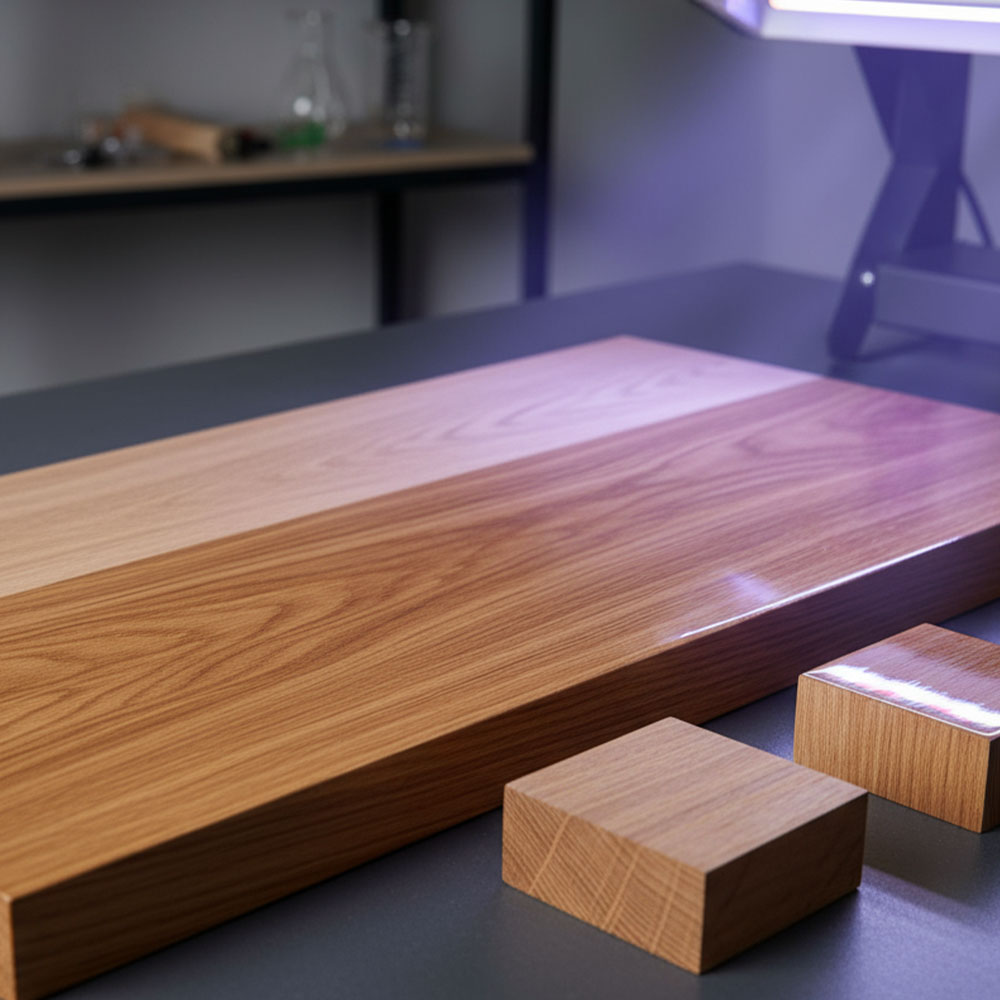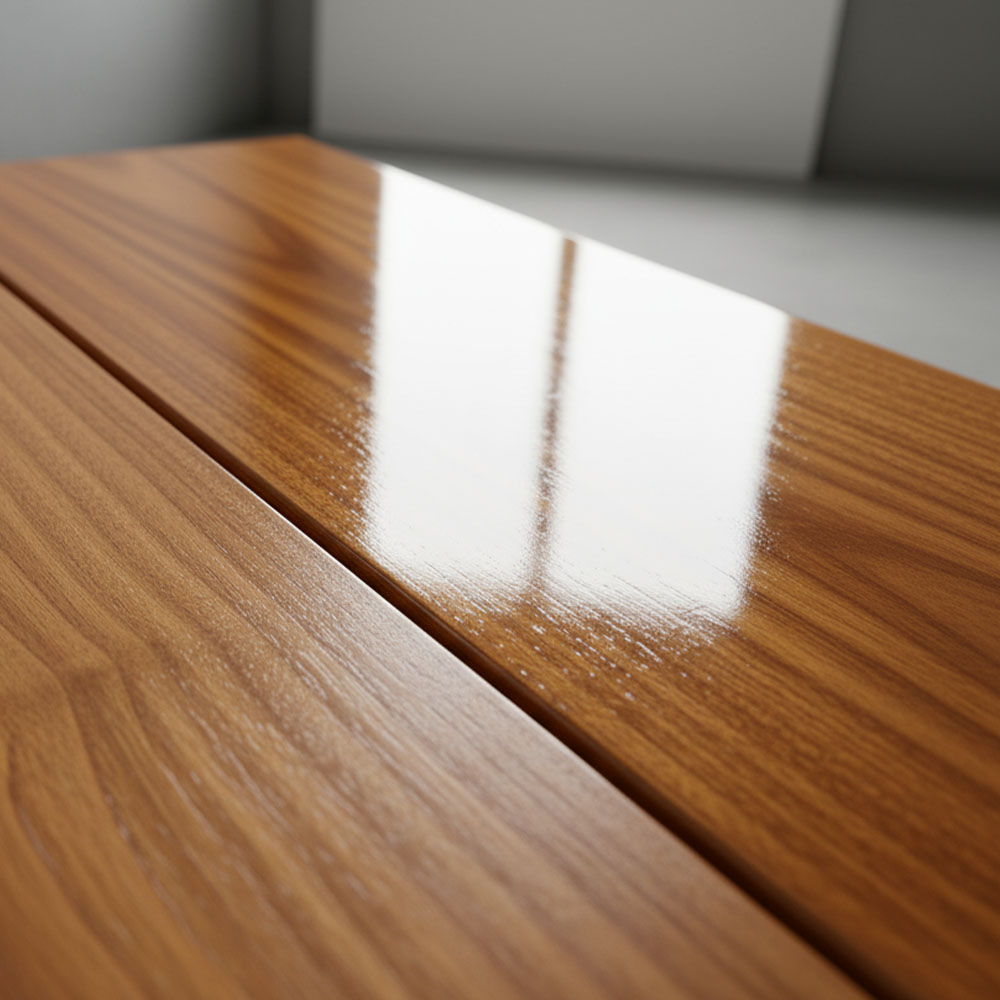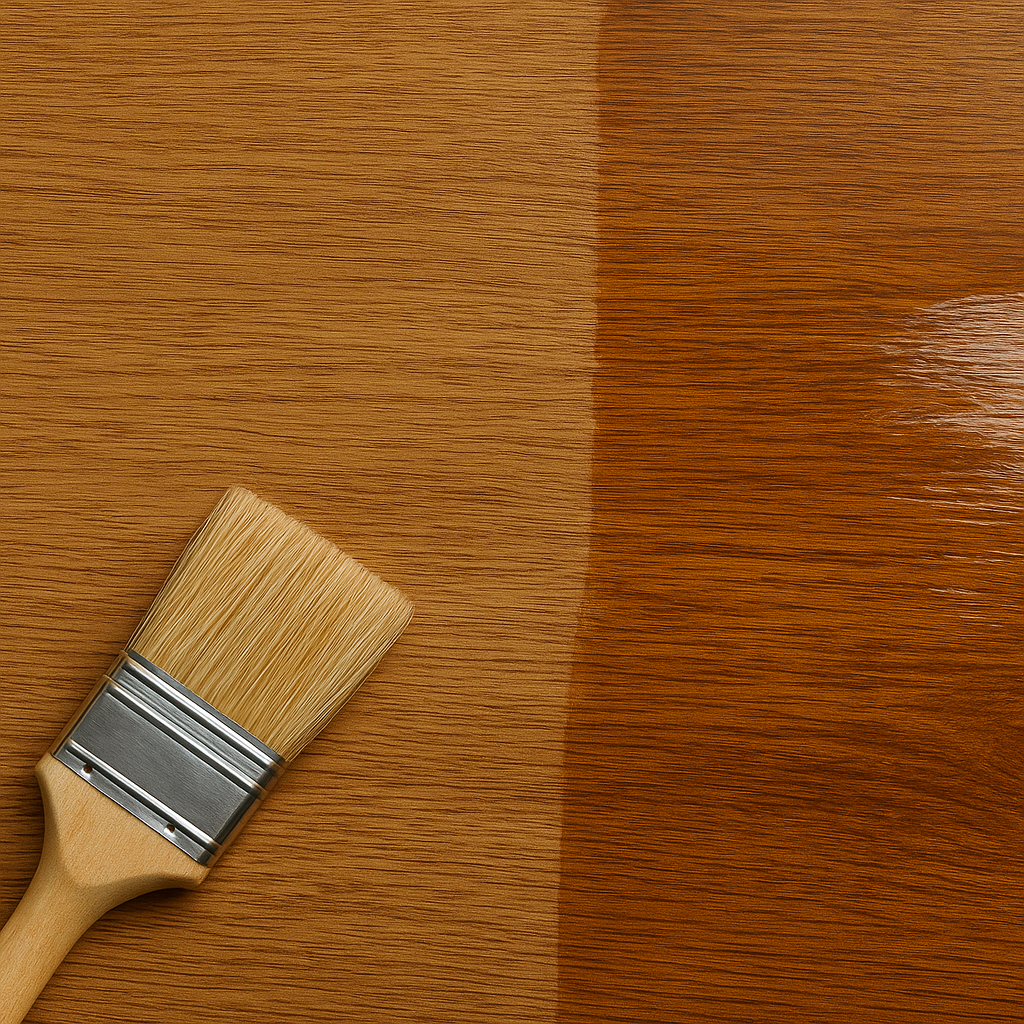When you choose engineered wood flooring, the finish matters. Beyond protection, the finish determines a floor’s look, feel, durability, maintenance needs, and even environmental impact. Today, three finishes dominate the market: oil-based, water-based, and UV-cured. Each option offers distinct advantages and trade-offs, so you should match the finish to the room’s use, desired appearance, and long-term maintenance plan.
Below, we compare composition, application, performance, and practical pros and cons to help you decide.
Oil-Based Finishes
Composition and Application
Oil-based finishes are typically formulated from natural oils—such as linseed or tung oil—combined with resins. These penetrate deeply into the wood fibers rather than just sitting on the surface, enriching the wood grain and creating a warm, organic look.
The application usually requires multiple coats, with long drying times between each. Although time-intensive, the result is a floor with an unmistakably natural and traditional character.
Advantages
- Enhanced Natural Look and Feel: Oil penetrates into the wood, emphasizing grain patterns and imparting a soft, matte sheen. Many homeowners prefer this authentic, hand-rubbed appearance.
- Ease of Spot Repairs: Scratches or small blemishes can often be touched up locally by reapplying oil, avoiding full refinishing.
- Aging Gracefully: Over time, oil-finished floors often develop a patina that many consider beautiful and unique.
Disadvantages
- Longer Drying Time: Each coat may take many hours or even days to cure, extending project timelines.
- Higher Maintenance: Floors require periodic re-oiling to maintain protection and luster.
- Less Resistance to Scratches and Stains: Compared to synthetic finishes, oil-based coatings are softer and more susceptible to wear.
Best For: Traditional interiors, homeowners seeking a natural aesthetic, and those willing to commit to ongoing care.
Water-Based Finishes
Composition and Application
Water-based finishes use water as the main solvent combined with acrylic or polyurethane resins. Application is relatively simple, requiring multiple thin coats that dry quickly—making the process more efficient compared to oil-based options.
These finishes are especially prized for their clarity and ability to maintain the wood’s original tone without yellowing over time.
Advantages
- Fast Drying: Coats dry quickly, allowing several applications in a single day and speeding up installation timelines.
- Eco-Friendly with Low VOCs: Safer for installers and occupants, water-based finishes emit fewer volatile organic compounds and odors.
- Non-Yellowing Clarity: Ideal for light-colored woods like maple or birch, preserving their fresh appearance.
- Good Durability: With sufficient coats, they provide strong protection against everyday wear.
Disadvantages
- Less Grain Enhancement: Water-based finishes often look flatter than oil, providing less depth and richness to wood grain.
- Requires Multiple Coats: To achieve durability, several layers are needed, increasing labor and material costs.
- Slightly Harsher Feel: Some users report that water-based finishes can leave the surface feeling thinner or less substantial underfoot.
Best For: Modern spaces, eco-conscious buyers, or projects requiring quick installation with minimal disruption.
UV-Cured Finishes
Composition and Curing Process
UV-cured finishes are created from acrylate monomers and oligomers that undergo polymerization when exposed to ultraviolet light. The curing process is nearly instantaneous—floors can be walked on immediately after installation.
This technology produces an exceptionally hard surface, offering superior resistance to wear and chemicals compared to traditional finishes.
Advantages
- Immediate Use: No waiting time; floors are ready as soon as the UV curing process is complete.
- Superior Durability: Extremely resistant to scratches, abrasion, and chemical spills, making them perfect for commercial or high-traffic applications.
- Low Maintenance: The hardened layer means less need for ongoing care compared to oil finishes.
- Consistent Results: Industrial application ensures uniform quality and finish.
Disadvantages
- Specialized Equipment Required: Curing requires professional UV light machinery, making DIY or small-scale application impractical.
- Higher Cost: Equipment, technology, and application expertise contribute to increased upfront expenses.
- Less Repair Flexibility: Spot repairs are more difficult compared to oil finishes; damaged areas may require full refinishing.
Best For: High-traffic commercial spaces, households prioritizing durability, or projects where downtime must be minimized.
Comparative Overview
| Feature |
Oil-Based Finish |
Water-Based Finish |
UV-Cured Finish |
| Appearance |
Warm, natural, highlights grain |
Clear, preserves light wood tones |
Even, smooth, highly durable surface |
| Durability |
Moderate, prone to scratches |
Good with multiple coats |
Excellent, top-tier protection |
| Drying/Curing Time |
Long (hours–days) |
Short (1–2 hours per coat) |
Instant after UV exposure |
| Maintenance |
Regular re-oiling required |
Low, but recoating after years |
Minimal, but hard to repair spots |
| Eco-Friendliness |
Natural oils, moderate VOCs |
Low VOC, eco-friendly |
Depends on formulation, often low VOC |
| Cost |
Moderate, higher maintenance long term |
Moderate to high (multiple coats needed) |
High initial cost, long-term value |
| Best Application |
Homes seeking natural aesthetics |
Quick installs, eco-conscious projects |
Commercial, high-traffic, zero downtime |
Choosing the Right Finish
Ultimately, the decision depends on aesthetic preference, performance needs, budget, and installation environment:
- Oil-Based Finish → Best for homeowners who value natural beauty, warmth, and are comfortable with periodic maintenance.
- Water-Based Finish → Ideal for eco-conscious consumers, projects on tight timelines, or spaces where maintaining original wood tones is key.
- UV-Cured Finish → Perfect for commercial applications, high-traffic areas, or situations requiring maximum durability and immediate usability.
When selecting a finish for engineered wood flooring, balance appearance, maintenance, cost, and durability against your priorities. Manufacturers should also consider offering all three finishes to meet the diverse needs of today’s customers.
Engineered wood remains a versatile, attractive flooring choice. Yet the finish determines how that flooring performs over time. Oil-based, water-based, and UV-cured finishes each tell a different story—traditional warmth, modern practicality, or industrial-grade durability. Therefore, evaluate your aesthetic goals, traffic demands, budget, and maintenance expectations before deciding. In the end, the right finish keeps your floor beautiful and functional for years to come.


